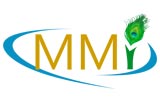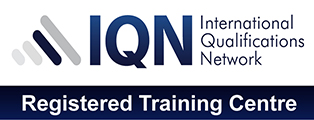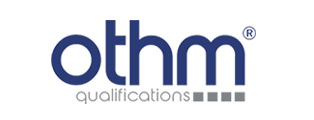IQN (UK) Qualifications
- Certified Strategic Manager (IQN, UK)
- Certified Project Management Analyst (IQN, UK)
- Diploma in Human Resource Management (IQN, UK)
- Diploma in Marketing (IQN, UK)
- Diploma in Supply Chain Management (IQN, UK)
- Diploma in Hospitality Management (IQN, UK)
- Diploma in Business English (IQN, UK)
- Advanced Certificate in Business Management (Cedar Academy, Singapore)
- Advanced Certificate in Business Communication (Cedar Academy, Singapore)
- ❖ Contents
- Part A: Strategy Formulation
- 1. Objective
- 2. The external environment
- 3. Internal analysis
- 4. Strategic positioning I
- 5. Strategic positioning II
- Part B: Strategic Planning
- 6. The planning framework
- 7. Different approaches to strategic planning
- Part C: Strategy evaluation and selection
- 8. Strategy evaluation
- 9. Strategy selection
- Part D: Strategy implementation
- 10. Communication
- 11. Managing projects
- 12. Teams
- 13. Strategy implementation
- 14. Review and monitoring
- ❖ Contents
| PMA Framework 1 : | Project Feastibility |
| PMA Framework 2 : | Project Scope |
| PMA Framework 3 : | Project Planning |
| PMA Framework 4 : | Project Scheduling |
| PMA Framework 5 : | Project People Management |
| PMA Framework 6 : | Cost Estimation & Budgeting |
| PMA Framework 7 : | Project Risk Management |
| PMA Framework 8 : | Project Monitoring & Control |
| PMA Framework 9 : | Project Monitoring, Termination & Reporting |
- ❖ Contents
| Chapter 1 : | The Practice of HRM |
| Chapter 2 : | Organisation |
| Chapter 3 : | Factors Affecting Employee Behavior |
| Chapter 4 : | Learning & Development |
| Chapter 5 : | Human Resource Planning |
| Chapter 6 : | Recruitment |
| Chapter 7 : | Selection |
| Chapter 8 : | Monitoring & Managing Performance |
| Chapter 9 : | Reward Management |
| Chapter 10 : | Employee Relations |
| Chapter 11 : | Contemporary Concepts in HRM |
- ❖ Contents
| Chapter 1 : | Markets and Marketing |
| Chapter 2 : | The Marketing Process: Strategy and Planning |
| Chapter 3 : | Customer Focus |
| Chapter 4 : | The Marketing Environment |
| Chapter 5 : | Buying Behavior |
| Chapter 6 : | Market Segmentation and Positioning |
| Chapter 7 : | Product |
| Chapter 8 : | Place |
| Chapter 9 : | Pricing |
| Chapter 10 : | Promotion |
| Chapter 11 : | Services Marketing |
- ❖ Contents
| Chapter 1 : | The Growing Demand for Supply Chain Management |
| Chapter 2 : | Understanding Supply Chain from Different Perspectives |
| Chapter 3 : | Digging into Your Supply Chain |
| Chapter 4 : | Optimizing Your Supply Chain |
| Chapter 5 : | Connecting Supply Chain Processes |
| Chapter 6 : | Planning the Supply Chain |
| Chapter 7 : | Sourcing, Purchasing and Procurement |
| Chapter 8 : | Making Your Products or Services |
| Chapter 9 : | Delivering Your Products or Services |
| Chapter 10 : | Managing Product Returns and Reverse Supply Chains |
| Chapter 11: | Enabling Your Supply Chain |
| Chapter 12: | Managing Digital Supply Chain |
| Chapter 13: | Integrating Advanced Manufacturing into Your Supply Chain |
| Chapter 14: | Managing Digital Supply Chains |
| Chapter 15: | Transforming Your Supply Chain |
| Chapter 16: | Adopting Supply Chain Metrics |
| Chapter 17 : | Managing Supply Chain Risks |
| Chapter 18: | Building Supply Chain Analytics |
| Chapter 19: | Selecting a Supply Chain Career |
| Chapter 20: | Pursuing Supply Chain Education |
- ❖ Contents
| Chapter 1 : | Introduction to Hospitality Management |
| Chapter 2 : | External Influences Affecting the Industry |
| Chapter 3 : | The Growth of Global Hospitality Brands |
| Chapter 4 : | The Accommodation Industry |
| Chapter 5 : | The Food Service Industry |
| Chapter 6 : | Food Production & Service |
| Chapter 7 : | Quality Management in the Global Hospitality Industry |
- ❖ Contents
- Section 1 _ Emails
- Unit 1 - Managing your inbox
- Unit 2 - Dealing with group emails
- Unit 3 - Dealing with long emails
- Section 2 _ Doing business
- Unit 4 - Understanding organizations
- Unit 5 - Managing schedules and budgets
- Unit 6 - Reading agendas and minutes
- Unit 7 - Reading Cvs and covering letters
- Unit 8 - Studying job descriptions
- Unit 9 - Analysing business reports
- Unit 10 - Reviewing annual reports
- Section 3 _ Marketing and advertising
- Unit 11 - Browsing advertisements
- Unit 12 - Product and service brochures
- Unit 13 - Exploring company websites
- Unit 14 - Social media
- Section 4 _ Business media and books
- Unit 15 - Reading the news
- Unit 16 - Business media websites
- Unit 17 - Analysing the money or personal finance section
- Unit 18 - Watching the markets
- Unit 19 - Reading business blogs
- Unit 20 - Reading business books




